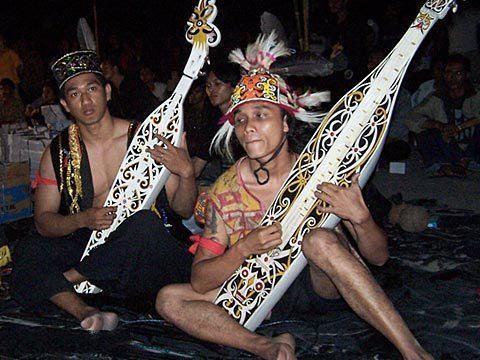 | ||
Orang Ulu (which means "people of the interior) is an ethnic designation politically coined to group together roughly 27 very small but ethnically diverse tribal groups in northeastern Sarawak, Malaysia with populations ranging from less than 300 persons to over 25,000 persons. Orang Ulu is not a legal term and no such racial group exist or listed in the Malaysian Constitution. The term was popularised by a minority association known as "Orang Ulu National Association" (OUNA) that was formed in 1969.
The Orang Ulu typically live in longhouses elaborately decorated with murals and woodcarvings. They are also well known for their intricate beadwork detailed tattoos and rattan weaving. The Orang Ulu tribes can also be identified by their unique music - distinctive sounds from their sapes, a plucked boat-shaped lute, formerly with two strings, nowadays usually with four strings. They also practice Kanjet, a form of traditional dance.
A vast majority of the Orang Ulu tribes are Christians but old traditional religions are still practiced in some areas.
Orang Ulu classification
There are about 27 small Dayak people groups that are classified as Orang Ulu such as:-
